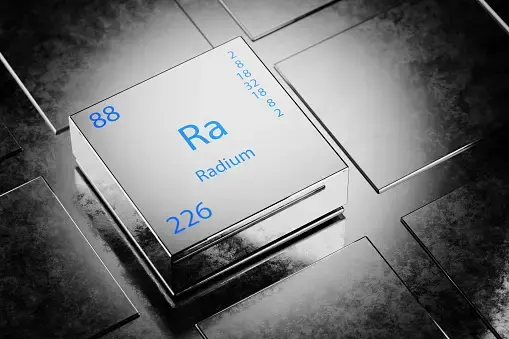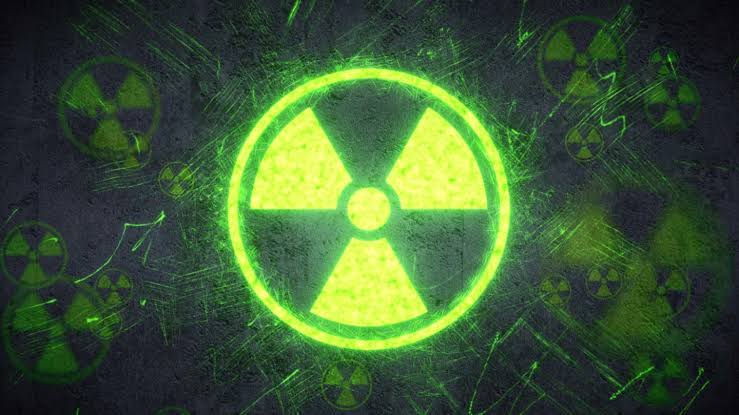
Radium is a radioactive chemical element with the atomic number 88. It was discovered by Marie and Pierre Curie in 1898. They named it after the Latin word for ray, because its intense radioactivity caused it to emit bright flashes of light. Today, we know that radium is one of the heaviest of all the naturally occurring elements. It is also one of the most radioactive. Its radioactivity is so intense that a sample of radium that is the size of a grain of salt can generate enough heat to boil a cup of water.
Radium has been used in a number of applications, including medical treatment, timekeeping, and luminous paints. However, its radioactivity also makes it dangerous. High exposure to radium can cause bone cancer and other health problems.
The element radium is best known for its radioactivity. Radium was discovered in 1898 by Marie Curie and Pierre Curie. It is a white, silvery metal that is highly radioactive. The element radium is best known for its radioactivity. When radium decays, it emits alpha, beta, and gamma radiation. This radiation is harmful to the human body and can cause cancer. Radium is used in cancer treatment and in nuclear power plants.

Radium is a radioactive element that was first discovered in 1898. It is a soft, silvery-white metal that is found in uranium and thorium ores. When radium is exposed to the air, it oxidizes and becomes a black powder.
Radium has many unique properties that make it useful in a variety of applications. For example, radium is used in cancer treatment, because it can kill cancer cells. It is also used in radiotherapy, because it can help destroy tumors.
Radium is also used in nuclear reactors, because it can help control the nuclear reactions. In fact, radium is so effective at controlling nuclear reactions that it is actually used in the control rods of nuclear reactors.

Another interesting property of radium is that it is luminescent. This means that it emits light when it is exposed to radiation. This property is used in self-luminous paints, which are used on watches, clocks, and other instruments that need to be visible in the dark.
Radium is a highly radioactive element, and as such, it is dangerous to human health. Exposure to radium can cause a variety of health effects, including cancer. Therefore, it is important to be careful when handling radium, and to avoid exposure to it whenever possible.
Radium is a radioactive element that occurs naturally in the environment. It is found in the Earth's crust and in uranium and thorium ores. Radium is also produced artificially in nuclear reactors.
Radium has five naturally occurring isotopes. All five isotopes are radioactive and have different half-lives. The most common isotope of radium is radium-226. This isotope has a half-life of 1,600 years and is produced by the decay of uranium-238.
Radium is a silver-colored metal. It is soft and ductile. Radium is chemically similar to barium and magnesium. It is found in minerals such as pitchblende and carnallite.
Radium is radioactive due to the presence of unstable nuclei. When radium decays, it emits alpha particles, beta particles, and gamma rays. The alpha particles are the most dangerous because they can damage living tissue.
Radium is used in some medical treatments and in certain industrial applications. However, its use is limited because of its radioactivity.
Radium is a highly radioactive metal that was once used in a variety of consumer products, from toothpaste to color television tubes. Today, its only legal use is in sealed, radioactive sources for medical and industrial purposes. While small amounts of radium are found naturally in the environment, it is the man-made form that is most dangerous to human health.
When radium decays, it emits alpha particles, which are highly ionizing. This means that they can strip electrons from atoms, causing damage to DNA and other cellular components. Because alpha particles are so large, they can only travel a short distance before being stopped by tissue. This means that when radium is inhaled or ingested, it is particularly damaging to the cells in the body nearest to where it enters. For example, radium that is inhaled can damage the lungs, and radium that is ingested can damage the gastrointestinal tract.

Radium also emits gamma rays, which are less ionizing than alpha particles but can travel much further. This means that gamma rays from radium can damage cells throughout the body. In addition, radium can be taken up by the bones, where it can damage blood-forming cells and lead to anemia and bone cancer.
All of these effects make radium a very dangerous substance. Even small amounts of radium can cause health problems, and there is no safe level of exposure.
Radium is a chemical element with the symbol Ra and atomic number 88. It is the sixth element in group 2 of the periodic table, also known as the alkaline earth metals. Pure radium is silvery-white, but it readily combines with nitrogen (a common atmospheric gas) on exposure to air, forming a black surface oxide layer.
Radium has a long and strange history, full of strange and dangerous incidents. It was first discovered in 1898 by Marie and Pierre Curie, who were investigating the radioactive element uranium. They discovered that uranium was emitting a strange, invisible radiation, which they named "radium".
further investigation, they found that this strange radiation was actually coming from a new element, which they named "radium".
Radium was immediately hailed as a miracle element, and its strange radiation was used in all sorts of products, from medical treatments to consumer products. However, it quickly became clear that radium was extremely dangerous.Radiation from radium can cause all sorts of health problems, including cancer. In fact, radium was responsible for the deaths of Marie Curie and her daughter, Irene.
Despite its dangers, radium continued to be used in all sorts of products until the 1930s. It was only then that its dangers were fully understood and it was finally banned.


Comments